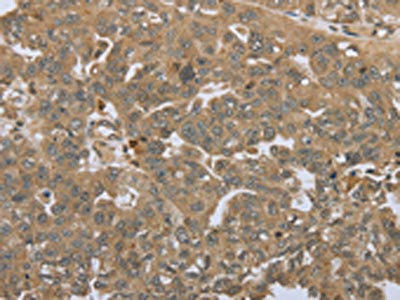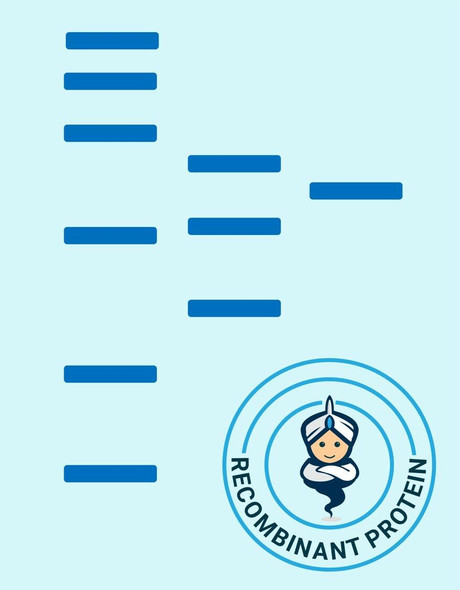Description
STMN2/STMN3/STMN4 Antibody (PACO18141)
The STMN2/STMN3/STMN4 Antibody (PACO18141) is a high-quality polyclonal antibody designed for research involving stathmin proteins, specifically STMN2, STMN3, and STMN4. These proteins are important regulators of microtubule dynamics, playing crucial roles in cell division, migration, and signaling pathways. The antibody, produced in rabbits, is highly specific and reactive with human samples, making it ideal for use in Western blot and immunofluorescence applications.Stathmins are known to be involved in various cellular processes, including neuronal development, synaptic plasticity, and cancer progression.
The STMN2/STMN3/STMN4 Antibody allows for the detection and analysis of these proteins in different cell types, providing valuable insights into their functions in both normal and disease states. Research using this antibody can help advance our understanding of stathmin biology and potentially lead to the development of targeted therapies for cancer and other diseases linked to dysregulated microtubule dynamics.
| Antibody Name: | STMN2/STMN3/STMN4 Antibody (PACO18141) |
| Antibody SKU: | PACO18141 |
| Size: | 50ul |
| Host Species: | Rabbit |
| Tested Applications: | ELISA, IHC |
| Recommended Dilutions: | ELISA:1:2000-1:5000, IHC:1:50-1:200 |
| Species Reactivity: | Human, Mouse |
| Immunogen: | Synthetic peptide of human STMN2/STMN3/STMN4 |
| Form: | Liquid |
| Storage Buffer: | -20°C, pH7.4 PBS, 0.05% NaN3, 40% Glycerol |
| Purification Method: | Antigen affinity purification |
| Clonality: | Polyclonal |
| Isotype: | IgG |
| Conjugate: | Non-conjugated |
 | The image on the left is immunohistochemistry of paraffin-embedded Human ovarian cancer tissue using PACO18141(STMN2/STMN3/STMN4 Antibody) at dilution 1/45, on the right is treated with synthetic peptide. (Original magnification: x200). |
 | The image on the left is immunohistochemistry of paraffin-embedded Human thyroid cancer tissue using PACO18141(STMN2/STMN3/STMN4 Antibody) at dilution 1/45, on the right is treated with synthetic peptide. (Original magnification: x200). |
| Background: | This gene encodes a member of the stathmin family of phosphoproteins. Stathmin proteins function in microtubule dynamics and signal transduction. The encoded protein plays a regulatory role in neuronal growth and is also thought to be involved in osteogenesis. Reductions in the expression of this gene have been associated with Down's syndrome and Alzheimer's disease. Alternatively spliced transcript variants have been observed for this gene. A pseudogene of this gene is located on the long arm of chromosome 6. |
| Synonyms: | stathmin-like 2/3/4 |
| UniProt Protein Function: | STMN2: a cytoskeletal protein that may play a role in neuronal differentiation, and in modulating membrane interaction with the cytoskeleton during neurite outgrowth. Associated with punctate structures in the perinuclear cytoplasm, axons, and growth cones of developing neurons. Neuron specific. |
| UniProt Protein Details: | Protein type:Cytoskeletal Chromosomal Location of Human Ortholog: 8q21.13 Cellular Component: cell soma; cytoplasm; growth cone; lamellipodium; neuron projection; perinuclear region of cytoplasm Molecular Function:calcium-dependent protein binding; protein binding; tubulin binding Biological Process: negative regulation of microtubule depolymerization; negative regulation of microtubule polymerization; positive regulation of microtubule depolymerization |
| NCBI Summary: | This gene encodes a member of the stathmin family of phosphoproteins. Stathmin proteins function in microtubule dynamics and signal transduction. The encoded protein plays a regulatory role in neuronal growth and is also thought to be involved in osteogenesis. Reductions in the expression of this gene have been associated with Down's syndrome and Alzheimer's disease. Alternatively spliced transcript variants have been observed for this gene. A pseudogene of this gene is located on the long arm of chromosome 6. [provided by RefSeq, Nov 2010] |
| UniProt Code: | Q93045 |
| NCBI GenInfo Identifier: | 51704330 |
| NCBI Gene ID: | 11075 |
| NCBI Accession: | Q93045.3 |
| UniProt Secondary Accession: | Q93045,O14952, Q6PK68, A8K9M2, G3V110, |
| UniProt Related Accession: | Q93045 |
| Molecular Weight: | 21,802 Da |
| NCBI Full Name: | Stathmin-2 |
| NCBI Synonym Full Names: | stathmin 2 |
| NCBI Official Symbol: | STMN2 |
| NCBI Official Synonym Symbols: | SCG10; SCGN10 |
| NCBI Protein Information: | stathmin-2 |
| UniProt Protein Name: | Stathmin-2 |
| UniProt Synonym Protein Names: | Superior cervical ganglion-10 protein; Protein SCG10 |
| Protein Family: | Stathmin |
| UniProt Gene Name: | STMN2 |
| UniProt Entry Name: | STMN2_HUMAN |














